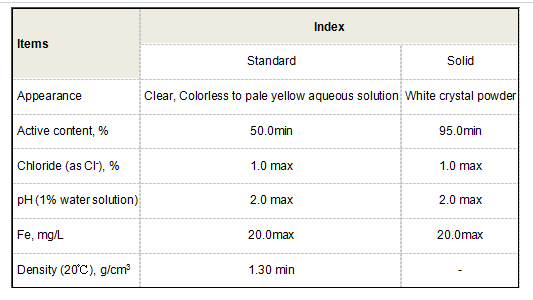Zinc HEDP Applications and Benefits in Industrial Processes
The Role of Zn-HEDP in Modern Industrial Applications
Zinc (Zn) plays a critical role in various industrial applications, particularly in corrosion protection, pharmaceuticals, and agriculture. One of the important zinc compounds that have gained significant attention is Zinc Hydroxyethylidene Diphosphonate, commonly referred to as Zn-HEDP. This compound combines the beneficial properties of zinc with the unique characteristics of HEDP, making it invaluable in several sectors.
Understanding Zn-HEDP
Zn-HEDP is a phosphonate compound that serves as a corrosion inhibitor, primarily in water treatment applications. Its molecular structure contains multiple functional groups that enhance its ability to chelate metal ions, effectively preventing their precipitation and promoting stability in various chemical environments. This chelation property also contributes to the compound's effectiveness in enhancing the solubility of zinc in aqueous solutions, making it a preferred choice for many industrial uses.
Corrosion Inhibition A Major Application
One of the most prominent applications of Zn-HEDP is in corrosion inhibition. In environments where metal surfaces are exposed to water and other corrosive agents, the integrity of materials is often compromised. Zn-HEDP works by forming a protective film on the metal surface, thereby reducing the rate of corrosion significantly. This is particularly essential in industries such as oil and gas, marine, and construction, where the longevity and durability of metal equipment are crucial.
The effectiveness of Zn-HEDP as a corrosion inhibitor can be seen in various studies, where it has been shown to provide superior protection compared to traditional methods. Its ability to maintain stability across a wide range of pH levels and temperatures makes it an ideal candidate for challenging environments.
Applications in Agriculture
In agriculture, Zn-HEDP plays an essential role as a micronutrient fertilizer. Zinc is a vital trace element necessary for plant growth and development. However, in many soils, zinc availability is limited, which can lead to deficiencies in crops. Zn-HEDP helps to improve zinc bioavailability, ensuring that plants can absorb this crucial nutrient more effectively.
'zn hedp 锌hedp'

Additionally, Zn-HEDP’s role in promoting root development and enzyme activity cannot be overlooked. The application of this compound can enhance crop yield and quality, making it a valuable addition to agricultural practices. Its use in fertilizers not only aids in the growth of the plants but also contributes to sustainable agricultural practices by minimizing the impact of excess fertilizers on the environment.
Pharmaceutical Uses
The biomedical sector has also recognized the potential of Zn-HEDP. Research continues to explore the compound's capabilities in various therapeutic applications. Due to its chelation properties, Zn-HEDP has been investigated for its ability to deliver zinc ions effectively in pharmaceutical formulations. This is particularly advantageous because zinc is known for its immune-boosting properties, its role in wound healing, and its contribution to overall health.
Furthermore, Zn-HEDP has potential applications in the treatment of diseases where metal chelation is beneficial, such as certain types of poisonings or toxic metal overload. The ability of Zn-HEDP to selectively bind to and sequester harmful metals opens new avenues for medical treatment, showcasing its versatility beyond industrial applications.
Environmental Impact and Safety
In the pursuit of modernization, the environmental impact of industrial chemicals has become a focal point of research and regulation. Zn-HEDP is considered relatively safe compared to other phosphonate compounds. Its biodegradability and low toxicity profiles make it a suitable option in various applications, ensuring that its use does not lead to adverse environmental effects.
The safety of Zn-HEDP extends to its handling and application in industrial and agricultural settings, providing a reliable alternative that doesn’t compromise worker safety or ecological balance.
Conclusion
In summary, Zn-HEDP is a multi-faceted compound that is becoming increasingly relevant in modern industrial applications, from corrosion inhibition and agriculture to pharmaceutical developments. Its unique properties not only make it effective in various sectors but also promote sustainable practices through lower toxicity and environmental impact. As industries continue to look for innovative solutions to enhance efficiency and safety, Zn-HEDP is poised to play an essential role in future advancements. Its integration into diverse fields underscores the importance of interdisciplinary approaches in solving contemporary challenges.
-
Water Treatment with Flocculant Water TreatmentNewsJun.12,2025
-
Polymaleic AnhydrideNewsJun.12,2025
-
Polyaspartic AcidNewsJun.12,2025
-
Enhance Industrial Processes with IsothiazolinonesNewsJun.12,2025
-
Enhance Industrial Processes with PBTCA SolutionsNewsJun.12,2025
-
Dodecyldimethylbenzylammonium Chloride SolutionsNewsJun.12,2025





